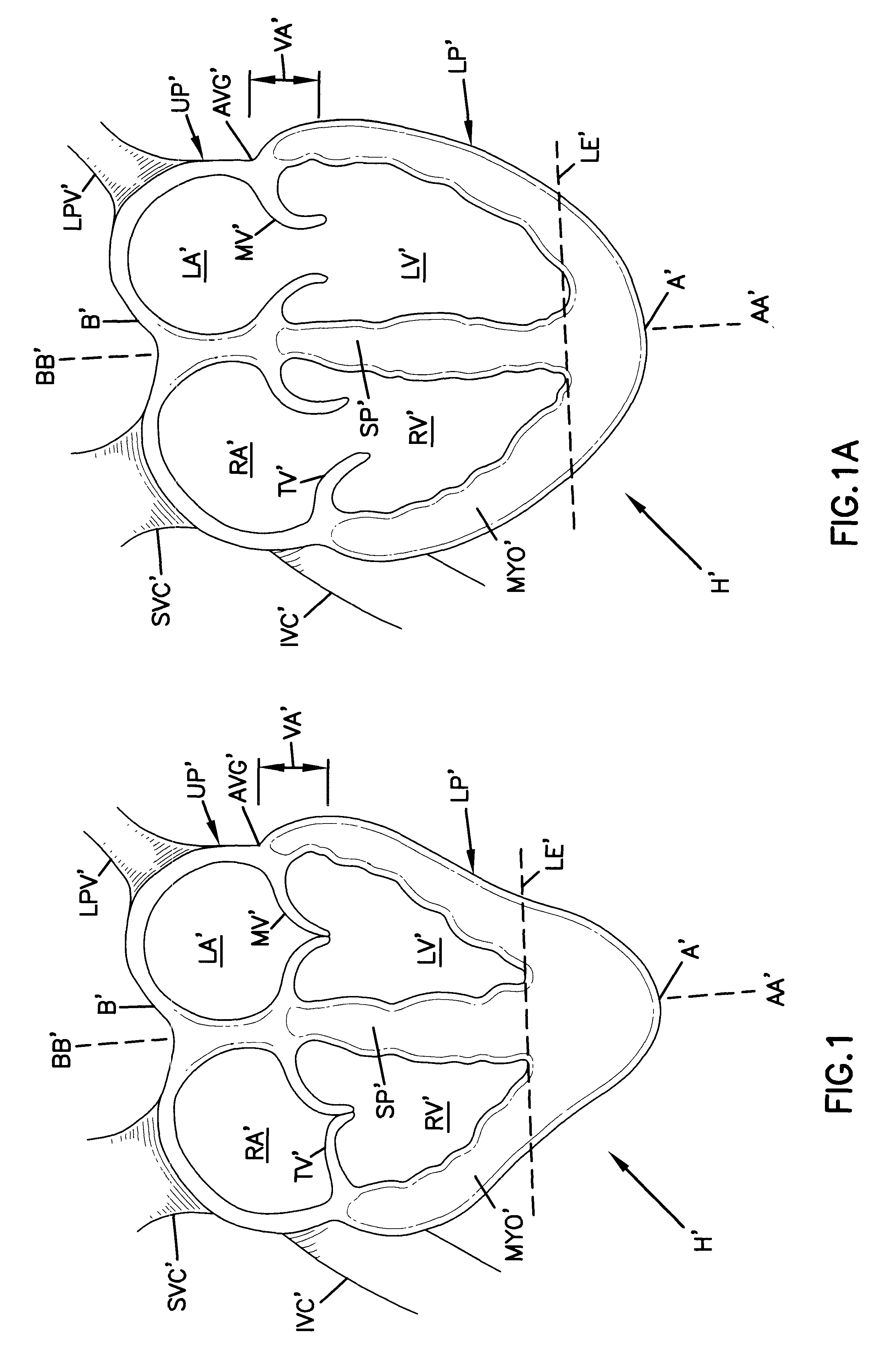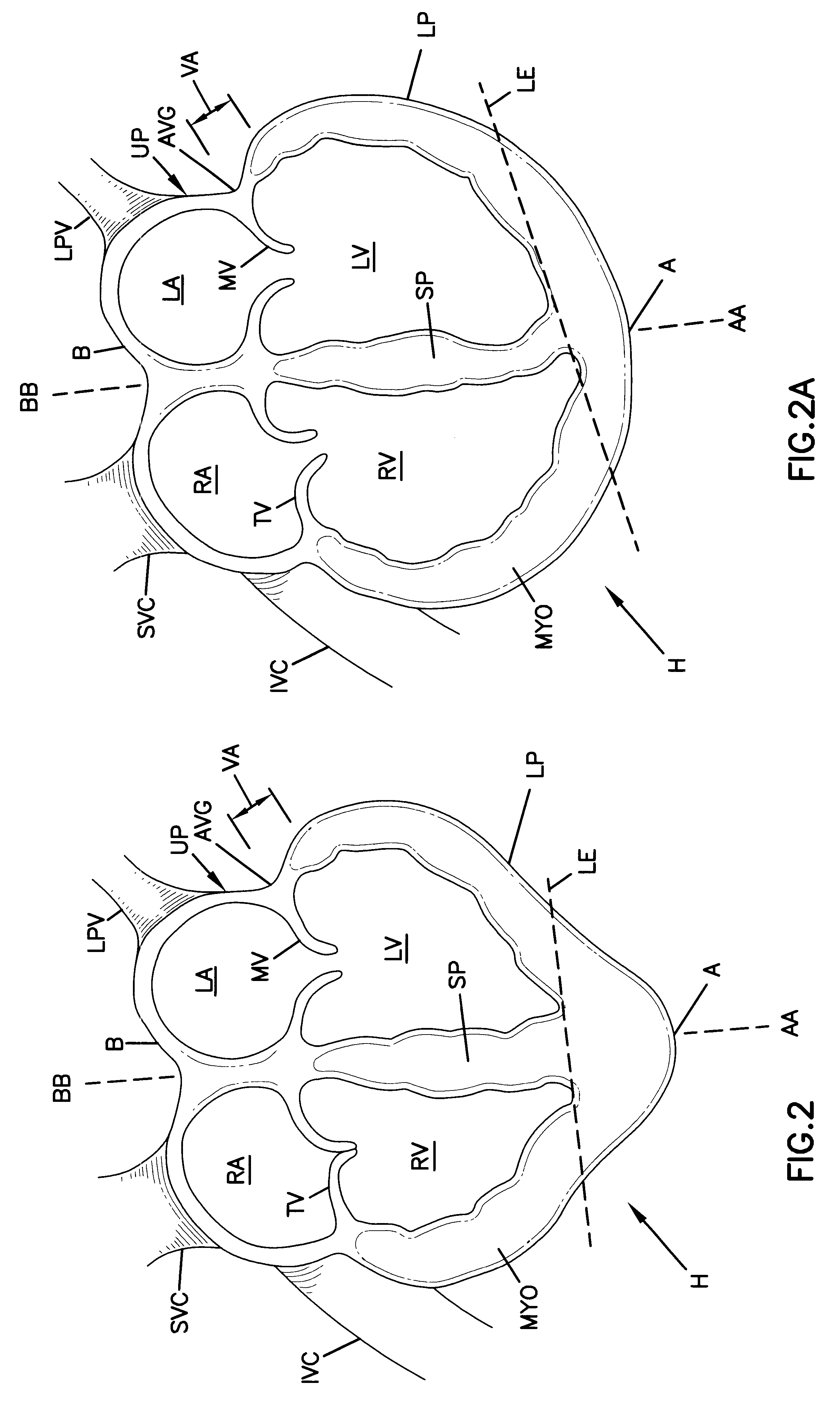Device for heart measurement
a heart measurement and heart valve technology, applied in the field of devices for heart measurement, can solve the problems of fatigue of afflicted patients, inability to perform even mild exertion tasks, pain and discomfort of patients, and the heart becomes so large that the heart cannot adequately supply blood
- Summary
- Abstract
- Description
- Claims
- Application Information
AI Technical Summary
Problems solved by technology
Method used
Image
Examples
second embodiment
With reference now to FIGS. 3, 3A, 4 and 4A, the cardiac constraint device is shown as a jacket 10, 10' of flexible, biologically compatible material. The jacket 10, 10' is an enclosed knit material having upper and lower ends 12, 12', 14, 14'. The jacket 10, 10' defines an internal volume 16, 16' which is completely enclosed but for the open ends 12, 12' and 14'. In the embodiment of FIG. 3, lower end 14 is closed. In the embodiment of FIG. 4, lower end 14' is open. In both embodiments, upper ends 12, 12' are open. Throughout this description, the embodiment of FIG. 3 will be discussed. Elements in common between the embodiments of FIGS. 3 and 4 are numbered identically with the addition of an apostrophe to distinguish the second embodiment and such elements need not be separately discussed.
The jacket 10 is dimensioned with respect to a heart H to be treated. Specifically, the jacket 10 is sized for the heart H to be constrained within the volume 16. The jacket 10 can be slipped ar...
first embodiment
According to this embodiment, the diameter of the lumen 120 and 121 are constant along the length of the first and second handle members 110 and 111. In contrast to the first embodiment, the first handle member 110 does not have a lumen 120 configured to anchor the flexible member 101. Instead, the flexible member 101 is configured to be anchored within the lumen 120 of the first handle member 110. If desired, the handle members 110 and 111 can be identical and interchangeable.
As with the first embodiment, the first and second handle members 110 and 111, respectively, can be made of any material that is sterilizable. Preferably, the first and second handle members 110 and 111 are made of materials typically used in the manufacturing of medical devices. Examples of materials that could be used to make the first and second handle members 110 and 111 include plastics, such as polyethlyne, annealed stainless steel, brass or aluminum. If desired, the flexible member 101 and the first and...
PUM
 Login to View More
Login to View More Abstract
Description
Claims
Application Information
 Login to View More
Login to View More - R&D
- Intellectual Property
- Life Sciences
- Materials
- Tech Scout
- Unparalleled Data Quality
- Higher Quality Content
- 60% Fewer Hallucinations
Browse by: Latest US Patents, China's latest patents, Technical Efficacy Thesaurus, Application Domain, Technology Topic, Popular Technical Reports.
© 2025 PatSnap. All rights reserved.Legal|Privacy policy|Modern Slavery Act Transparency Statement|Sitemap|About US| Contact US: help@patsnap.com



